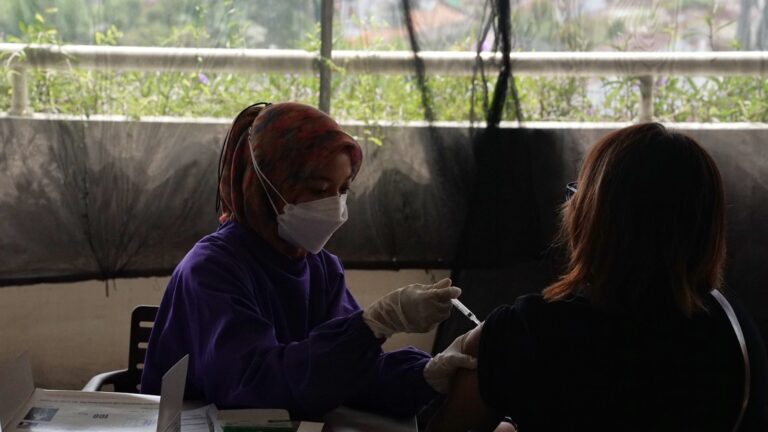Lyme disease is one of the most misunderstood and misdiagnosed illnesses in modern medicine. It’s not just about a single bacterial infection. In reality, Lyme disease has become an umbrella term for a complex group of tick-borne illnesses. It’s not just about Borrelia burgdorferi, the primary bacterium behind Lyme disease. Tick bites can transmit multiple pathogens in one go, leading to Lyme co-infections that complicate diagnosis, symptoms, and treatment.
What’s even more frustrating? Not all Lyme cases present with a bullseye rash, and Lyme disease can mimic other chronic illnesses. This can lead to a painful cycle of misdiagnosis and ineffective treatments.
If you’ve been chasing symptoms with no answers, keep reading. Understanding Chronic Lyme disease and its co-infections could be the missing piece to finally getting your life back.
What Exactly is a Co-Infection?
A co-infection occurs when a single tick bite transmits more than one pathogen. Ticks are nature’s dirty syringes, often carrying multiple harmful organisms that they can pass on to their host in one bite. This makes it possible to contract several infections at once.
While Borrelia burgdorferi is the primary pathogen associated with Lyme disease, other infections are just as prevalent and can lead to severe complications. Each Lyme co-infection requires separate testing and tailored treatment to ensure that all pathogens are effectively addressed.
If these co-infections are overlooked, they can persist and contribute to Chronic Lyme disease symptoms, making full recovery more difficult. Many Lyme patients struggle with misdiagnosis, especially because Lyme disease can mimic other chronic illnesses. This complexity underscores the importance of accurate and comprehensive testing for Lyme disease and its co-infections.
Why “Lyme Disease” is an Incomplete Term
The broad use of “Lyme disease” for various tick-borne illnesses often leads to confusion. Ticks can transmit a variety of pathogens beyond Borrelia burgdorferi, each with its own unique symptoms and treatment needs. This means those diagnosed with “Lyme disease” may actually suffer from Lyme co-infections that go undetected and untreated under a broad Lyme disease diagnosis.
Not all Lyme cases present with a bullseye rash, which can delay accurate diagnosis and treatment. Additionally, tick checks are essential after outdoor activities, as many people are unaware that tick bites are the primary mode of transmission for Lyme disease and co-infections.
Tick-Borne Co-Infections in the United States
Below is a list of common Lyme co-infections in the U.S. that often accompany Lyme disease. Understanding these additional infections is crucial for accurate diagnosis and effective treatment:
Babesia/Babesiosis
Type: Protozoan (malaria-like parasite)
Symptoms: Fever, chills, fatigue, anemia, and sweats. Severe cases may impact the liver, spleen, and respiratory system, especially in those with weakened immune systems.
Transmission: Often co-transmitted with Lyme disease and requires antimalarial treatment, not typical Lyme antibiotics.
Bartonella/Bartonellosis
Type: Bacteria
Symptoms: Neurological symptoms, swollen lymph nodes, fever, and skin rashes that may appear in streak-like patterns.
Transmission: Spread by tick bites, fleas, and lice, Bartonella is also known as “cat scratch fever.”
Ehrlichia/Ehrlichiosis
Type: Bacteria
Symptoms: High fever, headache, muscle aches, fatigue, and low white blood cell counts, impacting immune function.
Transmission: Ehrlichia weakens the immune system, often making it harder to recover from Chronic Lyme disease.
Anaplasma/Anaplasmosis
Type: Bacteria
Symptoms: Fever, chills, severe headaches, muscle pain, and digestive issues.
Transmission: Similar to Ehrlichia, Anaplasma affects white blood cells and can be severe if untreated.
Rocky Mountain Spotted Fever (RMSF)
Type: Bacteria (Rickettsia rickettsii)
Symptoms: High fever, headache, rash, muscle pain, and, in advanced cases, neurological symptoms and organ failure.
Transmission: Known for its distinct rash, RMSF can be life-threatening if untreated.
Borrelia Miyamotoi
Type: Bacteria (related to Borrelia burgdorferi)
Symptoms: Similar to Lyme disease, with fever, chills, headache, joint pain, and fatigue.
Transmission: Requires a treatment approach similar, but not identical, to Lyme disease.
How Prevalent Are Co-Infections?
Lyme disease alone is challenging, but co-infections add complexity. Approximately 10-20% of Chronic Lyme disease patients experience lingering symptoms even after standard treatment, and nearly 50% of these individuals may have co-infections. Addressing these Lyme co-infections is essential for effective and lasting recovery.
Why Comprehensive Testing for Co-Infections is Essential
Each Lyme co-infection has its own unique symptoms and treatment needs, and standard Lyme disease tests often fail to detect these additional pathogens. Comprehensive testing, such as IGeneX panels, provides a more reliable diagnosis by screening for multiple tick-borne diseases.
In my practice, I use bioenergetic assessments and muscle testing as an initial step to detect potential Lyme co-infections, guiding clients toward the appropriate tests for confirmation.
Final Takeaway: Understanding Co-Infections is Vital to Lyme Recovery
When we talk about Lyme disease, we’re often referring to a broader spectrum of tick-borne infections. Each co-infection adds layers of complexity, causing overlapping symptoms and requiring individualized treatment approaches. Comprehensive testing is crucial for anyone experiencing persistent symptoms following a tick bite, as co-infections can often be the missing piece in a full recovery.
Take the Next Step
Struggling with unexplained symptoms? You don’t have to navigate Lyme disease alone. I’ve been where you are, and I’ve dedicated my practice to helping people just like you find the answers they need.
Here’s how you can take the next step:
- Book a consultation to start your personalized recovery journey. We’ll begin with a bioenergetic assessment to identify potential imbalances and Lyme co-infections.
- Explore Wellhistic supplements specially formulated to support complex health needs, including immune support, detoxification, and energy restoration.
- Read more on my blog to deepen your understanding of Lyme disease, Chronic Lyme disease, and how to manage co-infections effectively.
- Take the Lyme Disease Quiz to assess your symptoms and see if further testing may be beneficial.
You don’t have to suffer in silence. Let’s work together to find the root cause of your symptoms and start your healing journey.
XX to your INVISIBLE BATTLES & UNSEEN STRENGTH,
Carola Le-Wriedt, Founder, Wellhistic and The Holistic Detox





